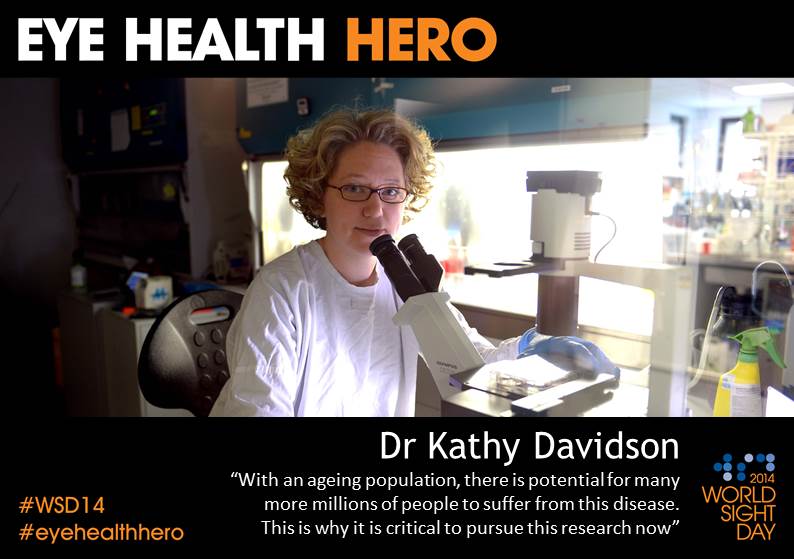Dr Kathy Davidson never thought she would see stem cell therapy come to fruition in her lifetime.

But after spending the last eighteen months working on an intensive research project to discover the cause of age-related macular degeneration, she is hopeful that stem cell technology will soon be delivering astounding results.
“Stem cell therapy as a concept is complicated and the research around it in humans is still quite young,” Kathy says. “As a scientist, I was amazed to see the recent application of human stem cells in clinical trials for macular degeneration. Our research does not involve transplanting cells, but rather uses stem cells to carefully study this disease—both approaches rely on stem cell technology to tackle the problem of macular degeneration. I’m very excited to be working on this project.”
In 2012, scientists from Britain and Japan won the Nobel Prize for Medicine for the discovery that adult cells can be transformed back into embryo-like stem cells.
Kathy, who is based at the Centre for Eye Research Australia, is now applying this cutting-edge technology to help unlock the secrets of eye disease, and in particular the mysteries of age-related macular degeneration.
“Essentially, we take a skin biopsy from a patient with eye disease, turn this back into stem cells, and then create new eye cells from the stem cells. We are then able to compare diseased eye cells with healthy ones to see where the diseased cells start to go wrong,” she says.
“In the case of age-related macular degeneration, we need to understand what is happening before the retinal cells die. If we can discover why these cells begin to degenerate, we can find ways to block the process, which is an important step towards developing therapies for the disease.”
Age-related macular degeneration affects the central vision, reducing a person’s ability to see detailed objects clearly and perform everyday tasks such as reading and driving. Some forms of the disease advance slowly, while others progress faster and can lead to a sudden loss of vision. At present, there is no cure for the disease, although some treatments are available for what is known as ‘wet AMD’.
According to Kathy, age-related macular degeneration is one of the common causes of vision loss in the developed world and currently affects around 1 in 7 Australians over the age of 50.
“With an ageing population in Australia and other developed nations, there is potential for many more millions of people to suffer from this disease,” she says. “This is why it is critical to pursue this research now.”
Although human stem cell applications are still in the early stages, Kathy says that she is pleased to see the science being applied in a positive way.
“By working alongside clinicians and other scientists, I’m really challenged to focus on the best applications that are needed now; to be more outcome-driven rather than exploratory.
“Age-related macular degeneration is a complex disease. We know there is a hereditary component which increases the risk of the disease, but no one has established which genes are involved and how they impact retinal cells. If we do happen to find a defect in a retinal cell from a person with the disease, then we can probably find ways to correct this.”
Kathy hopes to fast-track her research with the organisation’s new resident ‘robot’—a powerful machine that can keep thousands of stem cells alive at once. This will enable Kathy and her colleagues to study the differences between cells on a grand scale.
“We don’t know where the results might lead us, but I’m optimistic that at the rate stem cell research is progressing, we will be able to develop therapies, and hopefully cures, for eye diseases such as age-related macular degeneration in the near future.”
“It’s a great opportunity to be involved in research that could be the next big scientific discovery.”
- Download Kathy’s story in PDF here
- Photo credit: Les O’Rourke
